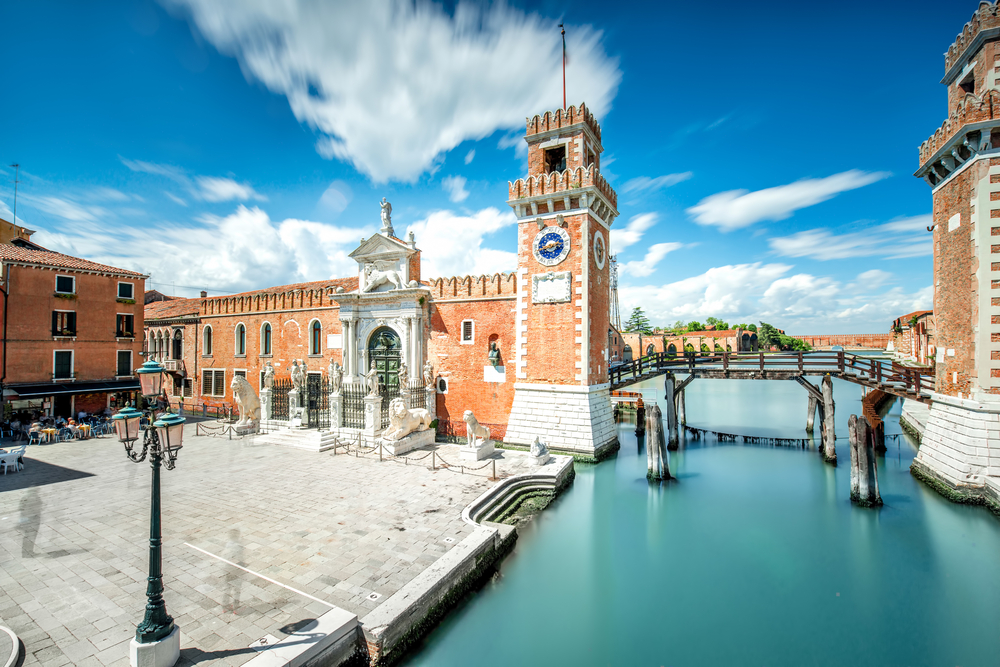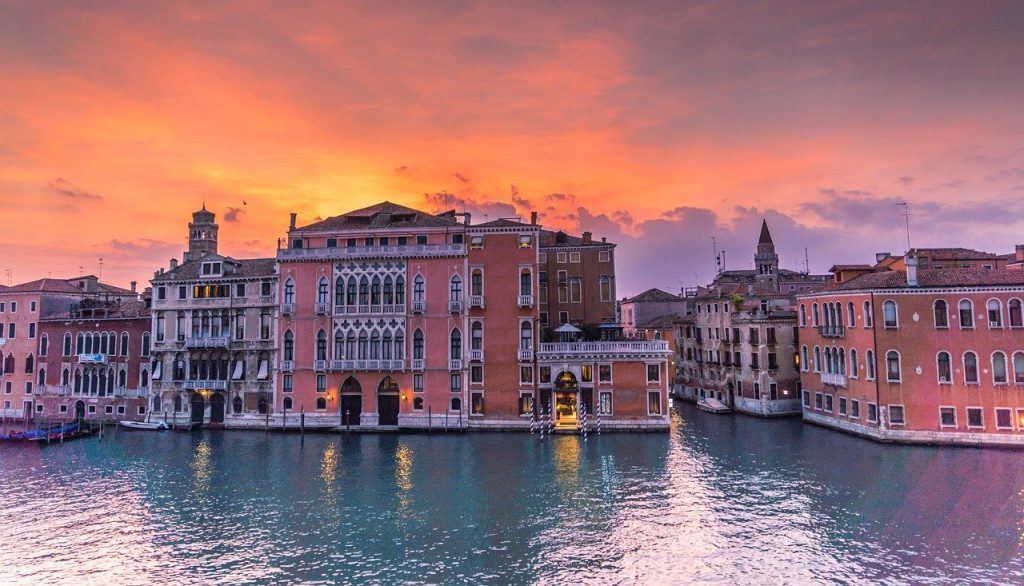“Venice can only be compared with itself.” Goethe
Back in 2018, Domiziana spent a couple of months with the Bookings For You team as part of a Summer internship scheme. Born in Marche, a region in central Italy, Domiziana has had a passion for travel since she was very young and she has always wanted to pursue a career in the travel industry. After studying English and German at the University of Urbino, Domiziana spent two years in Venice doing her Masters Degree. During this time, she completely fell in love with the city and its unique atmosphere. She is currently working for a big tour operator but has taken some time out to share her love of Venice with us and to share some top tips on how to explore a more hidden Venice… a side to Venice that you perhaps wouldn’t otherwise see.

Venice is a city of fairytales. No other place is like Venice and we all know why… The gondolas along the narrow canals, the imposing St. Mark’s Campanile with its red bricks, the Rialto Bridge with its tiny shops and the amazing view over the Canal Grande are all part of what makes this city so unique. And above all, where else in the world can you find a city built on water? Actually, it is built on a hundred little islands of the Venetian lagoon connected by the famous bridges of the city, but you definitely do have the sense of walking on water when visiting!
Despite its unique atmosphere, the images of Venice’s most iconic monuments and places are so common and widespread that, even on your first visit, you might almost feel you know the city already. Once there you might therefore miss the chance to experience the pure wonder that poets and writers had while admiring St. Mark’s Square for the first time. But don’t worry! That sense of wonder is still possible but to experience it, you’ll need to take the time to discover the less well known and less crowded gems that Venice has to offer as well as exploring the world-famous landmarks of the city.
I have had the privilege of living in Venice and enjoying plenty of time exploring its calle and campi (as Venetians call their streets and squares) and these are my top advices for living an authentic experience in such a unique place.
Venice: A city of art and of knowledge

Venice is certainly one of the world’s greatest cities of art, but you may not know that it is also home to an important university, the oldest business school in Italy. Not far from the station and Piazzale Roma (the main gateways to the city) is the square where the two souls of Venice, the artistic one and the academic one, are combined. Campo Santa Margherita is one of the biggest campi of the city and the main meeting point for all the students that live and study here. With its charming cafés and little restaurants, this is the perfect place for enjoying a break far from the tourist crowds while admiring a piece of Venetian life: students gathering together for an aperitivo, reading books on a bench or laughing and singing in a circle with a guitar. The reason why Campo Santa Margherita should be on your list of top places to visit in Venice is both because of what it offers when it comes to both the classic arts and the contemporary arts. Several historic buildings on the square and the Chiesa di Santa Margherita offer you the chance to appreciate the more classical art, whilst, if you climb the steps of the bridge connecting the square with the Campo San Pantalon and look to your left, you will be able to admire one the latest pieces of work of the world-famous street artist Bansky, “Migrant Child”.
Venice: A different perspective on the iconic city:

One of the most surprising things about Venice is that things around you can change really fast. You just need to turn a corner, take a side street or pass through a sotoportego (the classic Venetian covered walkways) to discover a different part of the city and that is exactly what happens if you enter the Ghetto Ebraico, one of Europe’s oldest Jewish ghettos. The Jewish community has played a great role in Venice’s life for centuries, but since they were confined to a specific area of the city, they developed the ghetto according to their specific needs. Here, buildings are much higher than in any other part of Venice, shops have their names in both Italian and Hebrew and if you happen to come here on Saturdays, you will experience the peculiar atmosphere of Jewish holy day with men wearing traditional kippahs and family gatherings in the typical restaurants. The ghetto is a place full of history, and it’s also worth visiting the Jewish Museum here on the main square. After visiting, you just need to cross a bridge to leave the quarter and reach one of Venice’s liveliest places for an aperitivo. In Fondamenta de la Misericordia you will find little restaurants and bacari, the typical Venetian bars where you can taste chicchetti (the traditional Venetian version of tapas) and one of the city’s most famous iconic drinks, the spritz. This drink, whose name is a reminder of the past Austrian rule, is a real institution in Venice: several versions of spritz can be found in the bacari and in Fondamenta de la Misericordia you can also have the chance to enjoy it with your family and friends on a boat!
The real Venice

If Ghetto Ebraico gives you the opportunity to discover a new side to Venice, there is another quarter which is considered among locals to be where you can find the most traditional and most authentic Venice nowadays, the Sestiere Castello, in the Eastern part of the city. Sestieri is the local name for the six big quarters the city is divided into and Castello is the one where the majority of Venetians still live. Far from the crowds, the cruise ships and the big events, this area is a maze of calle, sotoporteghi, little squares and narrow canals where silence reigns. Getting lost in this maze is one of the most beautiful experiences in Venice if you are interested in discovering a quieter and authentic version of the city. Each part of the Sestiere hides little secret places, such as Campo Ruga, where you can find the lowest sotoportego of the city, or Sotoportego dei Preti, known as the lovers’ covered walkway due to a heart-shaped red stone embedded in the wall. The stone is linked to a famous local legend of a fisherman who fell in love with a mermaid and it is said that touching the stone will lead you to your eternal love. Heading towards the Northern part of Castello you will then find Campo de la Celestia, just outside the big walls of the famous Arsenale, the place where the ships of the Republic’s float were built. Here is a long steel walkway the majority of tourists have never heard of and which runs outside the external wall of Arsenale, just above the sea and facing the island of Murano. This spectacular viewpoint is for sure one of the few still secret places in Venice!
Venice: Experience pure magic in the city

There is a particular time of the day when the splendour of this city is even greater: at sunset, when the sky turns into orange, the clouds have pink shades and the skyline of Venice becomes pure magic. You cannot leave the city without having admired this incredible moment from Sant’Elena, the island on the East part of the city connected to the famous Giardini della Biennale, where the world-renowned contemporary art exhibition takes place. Walk along Viale Vittorio Veneto, just outside one of the biggest parks of the city, and enjoy the breathtaking panorama: the Lido di Venezia, the island which hosts the famous international film festival, on your left, the little island of San Servolo just in front of you and on your right one of the most amazing views over St. Marks, the island of San Giorgio Maggiore and the entire skyline of the city. A real sight to behold!
We hope you enjoyed reading about a different side to Venice that Domiziana has shared with us all. But shhh! Don’t tell anyone and keep the magic a secret!
